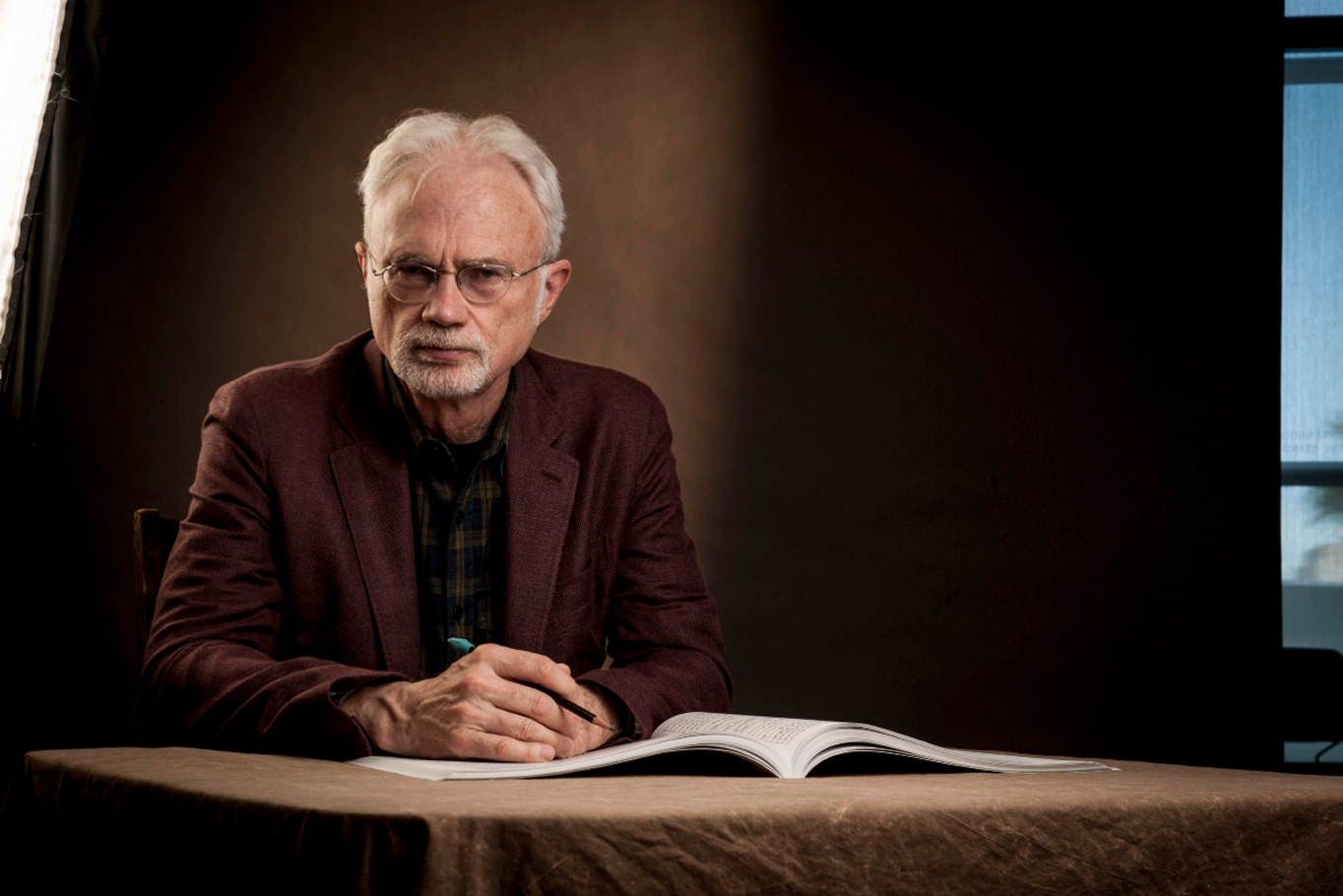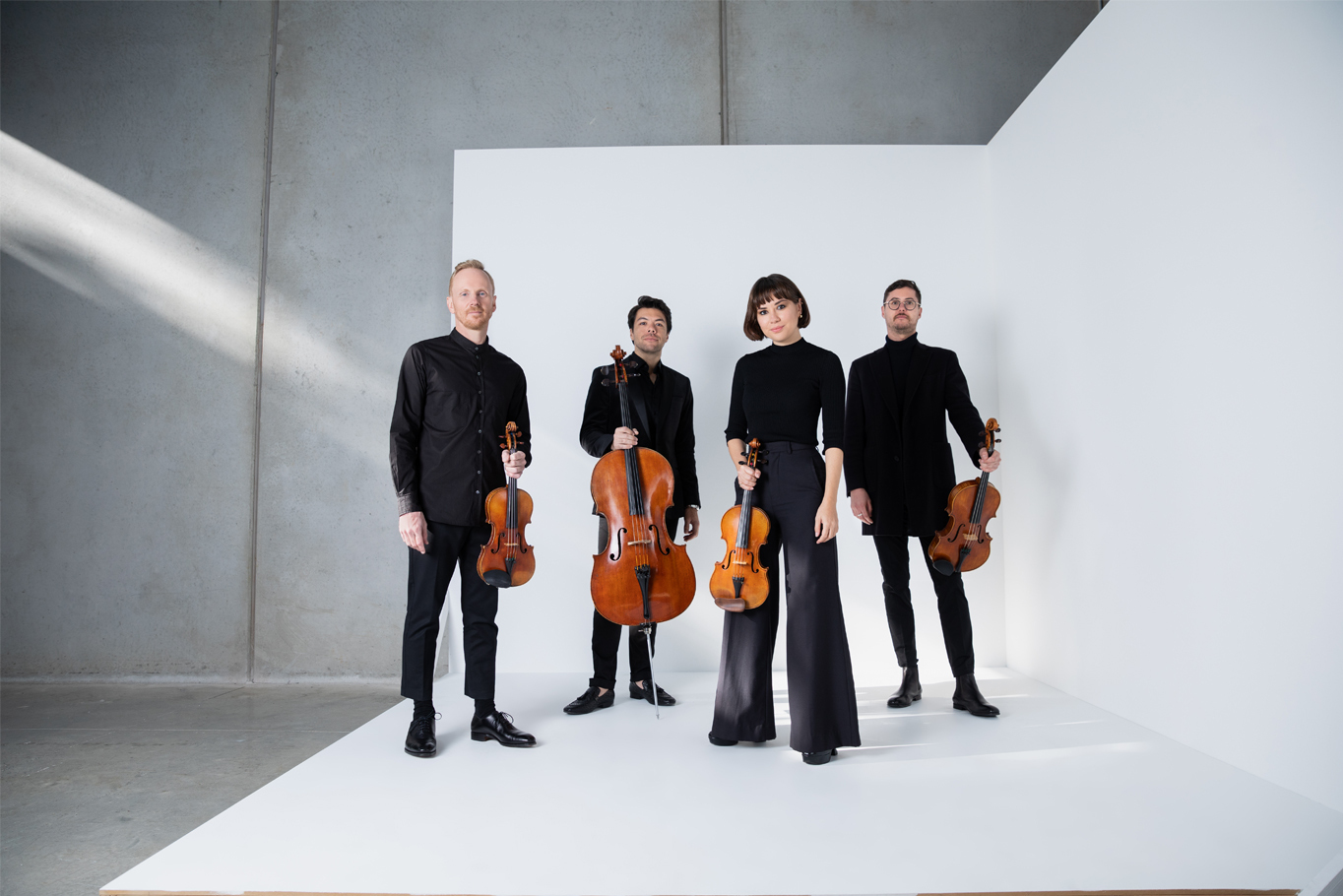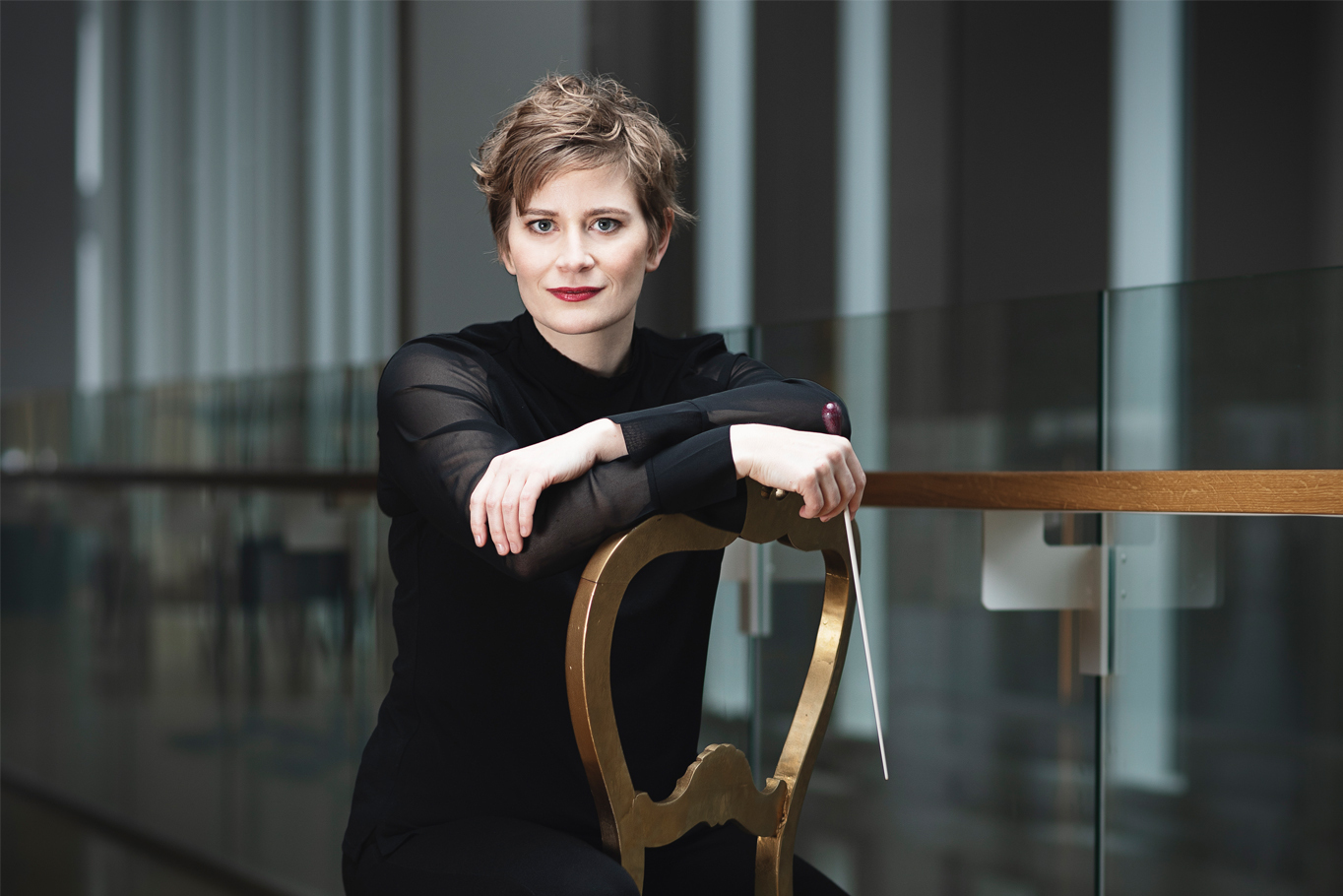
Beethoven in a hall of mirrors: John Adams and Absolute Jest
01 May, 2024
The Australian String Quartet and conductor Anja Bihlmaier discuss inspiration, collaboration and the 'ecstasy' of Beethoven ahead of their collaboration with the Sydney Symphony in June.
By Hugh Robertson
The great poet TS Eliot once wrote: ‘Immature poets imitate; mature poets steal; bad poets deface what they take, and good poets make it into something better, or at least something different.’ He was talking about the power of inspiration to creativity, the way an old work can light a fire and lead you into exciting new territory.
This June, the Sydney Symphony Orchestra embraces the spirit of Eliot’s observation in a unique concert that features three very different works where their composer has transformed music from an earlier era into something new – and newly-inspiring.
In his Tombeau de Couperin, Maurice Ravel took the structure and forms of Baroque dance music as his bedrock upon which to build a memorial to friends lost during World War I; Arnold Schoenberg took Brahms’ First Piano Quartet and expanded it for full orchestra, eschewing the piano in favour of drawing out every ounce of harmonic richness and drama from a much larger ensemble; and in Absolute Jest, American composer John Adams uses excerpts of Beethoven’s string quartets as the bones of a new work that is a little bit Beethoven, a little bit Adams, and a lot of fun.

Adams took as his chief inspiration Beethoven’s late string quartets, in particular No.14 (Op.131), No.16 (Op.135) and the Grosse Fuge (Op.133), taking small fragments and ‘tattoos’ from those works and walking them through ‘a hall of mirrors’.
‘They appear and disappear,’ says Adams in a video on his website. ‘They get stretched, I turn them upside-down, I pile one on top of another on top of another, and create a very dynamic dialogue between the solo string quartet and the orchestra.’
Adding to the excitement is that these concerts will witness a rare collaboration between the Sydney Symphony and another of this country’s great music ensembles, the Australian String Quartet. It is extremely unusual to have a string quartet and an orchestra on stage at the same time, but that is the setup demanded by Adams in Absolute Jest – he essentially treats the string quartet as if it were the soloist in a concerto, the focal point and driver of much of the action.
‘I read something that Adams himself had said or written, that there's lots of different facets to Beethoven, and there's lots of different facets to music, there's lots of different facets to Adams,’ says the ASQ's cellist Michael Dahlenburg. ‘He was pointing out that the DNA of this work is the ecstasy of Beethoven.’
‘And he also talks in another interview about the ecstasy and the power of the scherzos, which, when we often think of Beethoven, it's where he does his most concise work in the shortest space of time with the fewest notes. He can really create this absolute paradigm that encompasses that whole movement, that therefore really gives it its life, its playfulness.’

Absolute Jest is a work that asks a lot from both the quartet and the orchestra, and not just because of the unfamiliar structure of the piece. It demands everything that a Beethoven symphony demands, all the power and emotional expression of those towering works, as well as the intricacy and richness of the late quartets.
It’s a rich feast for an audience, but also for the musicians on stage who get to experience this rare and unique structure.
‘It’s absolutely fabulous,’ says Christopher Cartlidge, the ASQ’s viola player. ‘Both string quartets and orchestras are such extraordinary mediums of art and character and sound and expression.’
‘What I really love about this piece is that Adams doesn't change the quartet and he doesn't change the symphony orchestra,’ says ASQ violinist Francesca Hiew. ‘He keeps the symphony at full pelt. And you're hearing French horns and all sorts of things moving past.
‘You feel like you're in this cloud of the ghost of Beethoven kind of whizzing past here and there.’
There is also the added complication that Adams’ music doesn’t always go in the same direction as Beethoven: a challenge for fingers familiar with the originals.
‘Adams quotes quite extensively from the scherzo of Beethoven’s very final quartet, Op.135,’ explains Dale Barltrop, one of the two violinists in the ASQ. ‘The first violin part is quite acrobatic, but John Adams takes it in a slightly different direction and I catch myself out almost every time when I'm playing it, because I always want to return to Beethoven.
‘But it's so brilliantly crafted. It’s really exhilarating. [And] there’s so much to discover. It’s just so rich and so brilliantly woven together.
‘This particular piece is different than I think anything else we've done,’ he continues. ‘It requires us to be so rhythmically intertwined, the four of us. We have to be so tight. [And] I cannot understate the importance of the conductor in the web of relationships that formed in performing this piece.’

That conductor is the German Anja Bihlmaier, who will be making her Sydney Symphony debut with this concert. Born in southwest Germany, Bihlmaier has spent two decades progressing through the ranks of opera conductors in her homeland, before making the switch to symphonic repertoire. Since then she has experienced a meteoric rise, very quickly appointed Principal Guest Conductor of Finland’s esteemed Lahti Symphony Orchestra and Chief Conductor of The Hague’s Residentie Orkest – in the process becoming the first woman to hold either of those roles – and having recently debuted at Glyndebourne and at The Proms. And she is thrilled to be making her first visit to Australia.
‘I think the program is just amazing and just fantastic because it has so many colours,’ she says with a smile. ‘We have this red line that you have two composers for every piece, but very different ones.'
‘They are all related with each other,’ she continues. ‘But if you listen to it, it's totally different music. And that's what I think is very exciting…it’s a nice combination.’
Bihlmaier’s approach to conducting is somewhere between a theatre director and a hiking enthusiast, paying close attention to the story of the music but also to the landscape of the music.
‘It’s like exploring a landscape,’ she explains. ‘A score for me is like a map. First of all, you try to find out how you get from A to Z, to learn the basic things you need to understand. How is the texture? How is the architecture? How does that look like? Is it round? Is it more like a square?
‘And then once you know that, then you try to find what you want to explore. Who is living next door? Where are the streets? Where is the forest? Where is this and that? And it's the same with a score.’
Music as landscape is a well-worn metaphor to describe the emotional terrain of a piece of music, the ebbs and flows of energy and intensity – but in this case Bihlmaier means it quite literally.
‘Sometimes if I find it tricky to oversee the whole landscape of a score, I copy pages and add them next to each other. And then I stand on a ladder and then I see all this paper, in black and white, and then you can see the texture better. It looks like mountains, like valleys, or whatever. And then I try to memorize, “Okay, that was here and here's the next high point.”
‘As a conductor I think it's important to know the dramaturgy of a piece. There is a story in every piece of music. And then if I know the big moments, then I can try to get more and more into the details.’
It’s not just her own exploration that excites Bihlmaier, but then taking those discoveries to an orchestra and starting a conversation together, a process of back and forth where ideas are tested and perspectives challenged.
‘The fascinating thing then, in a rehearsal together with orchestra, is to agree on a concept,’ says Bihlmaier enthusiastically. ‘What do we want to bring out?
‘Like in Absolute Jest: are we focussing on the rhythms, or do we want to focus on details so that we really hear the Beethoven? And which colour do we play that? Is it more an oil painting, or more like watercolour? Do we want it to look more like a big field, like an atmosphere? Or you zoom in and you have all the details?
‘Many different things are possible, and I try to find out what I think what makes the piece fascinating and how it comes alive the best for our audience.’
